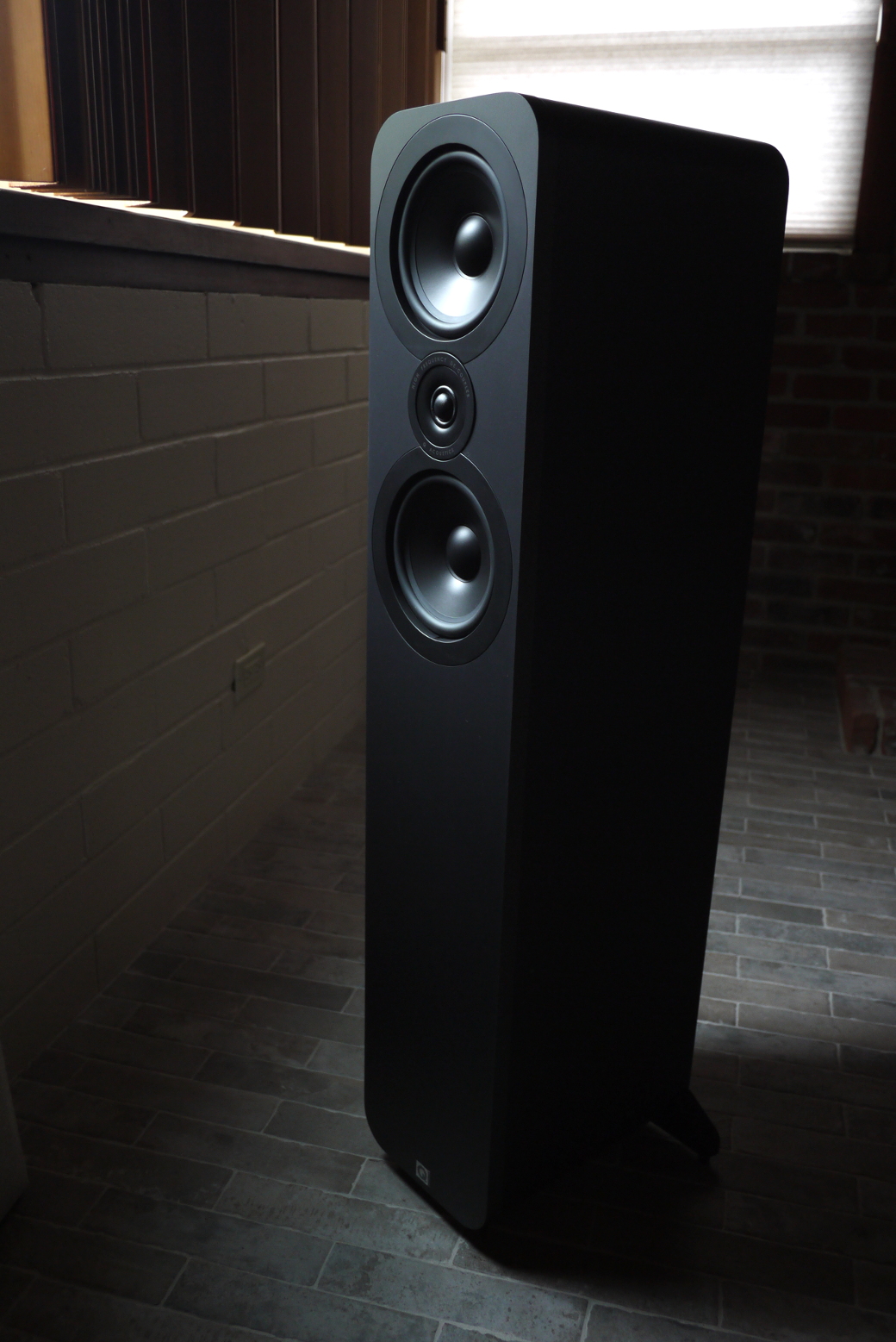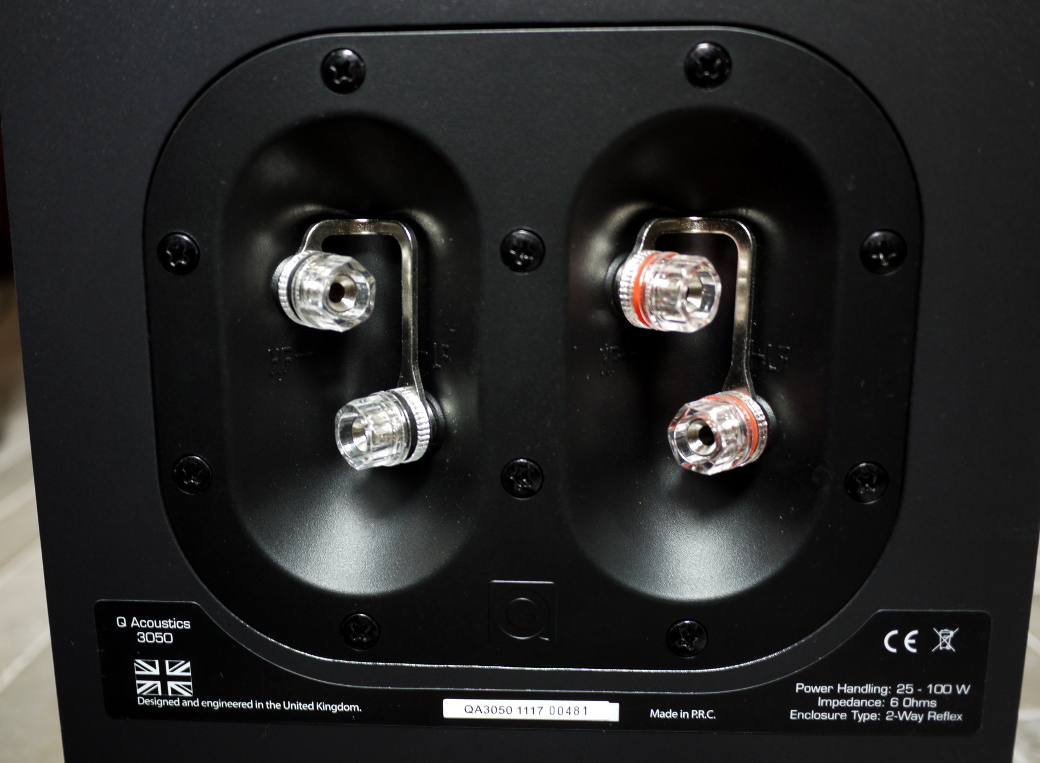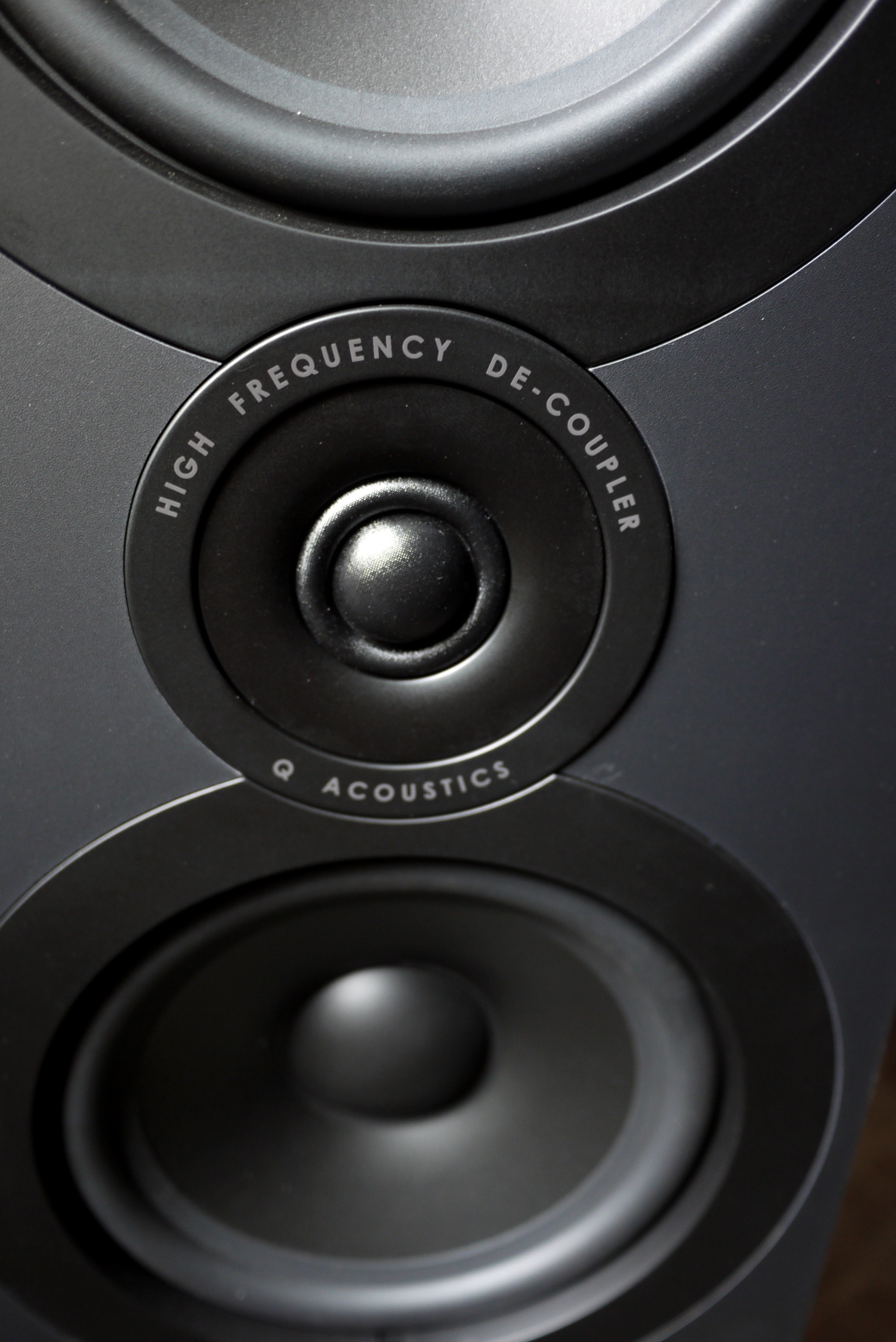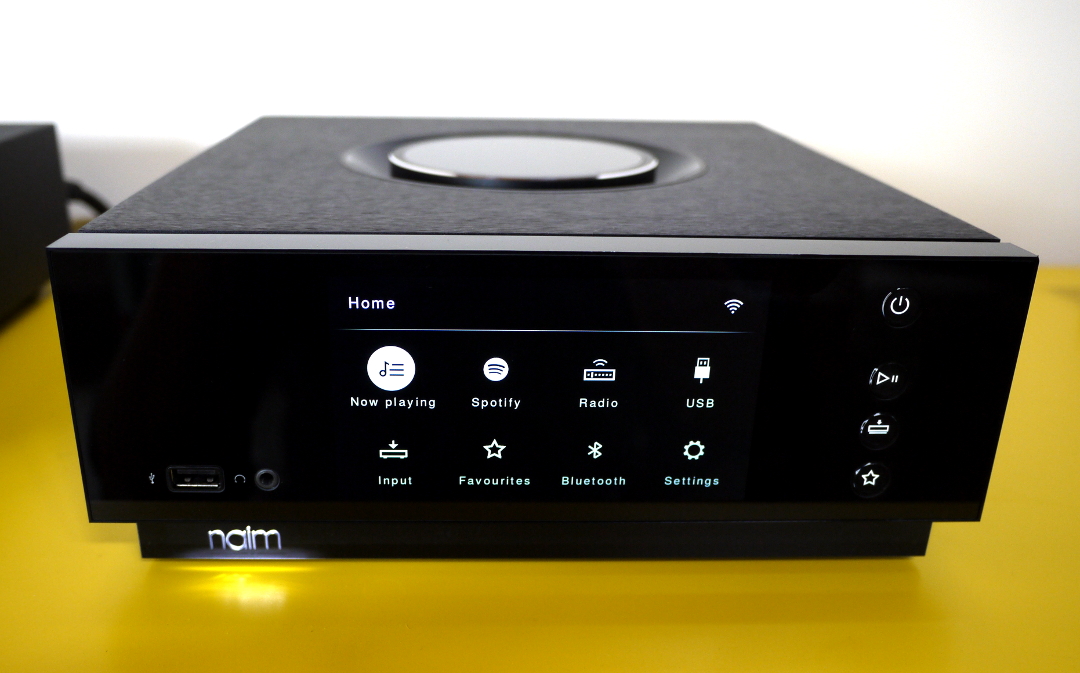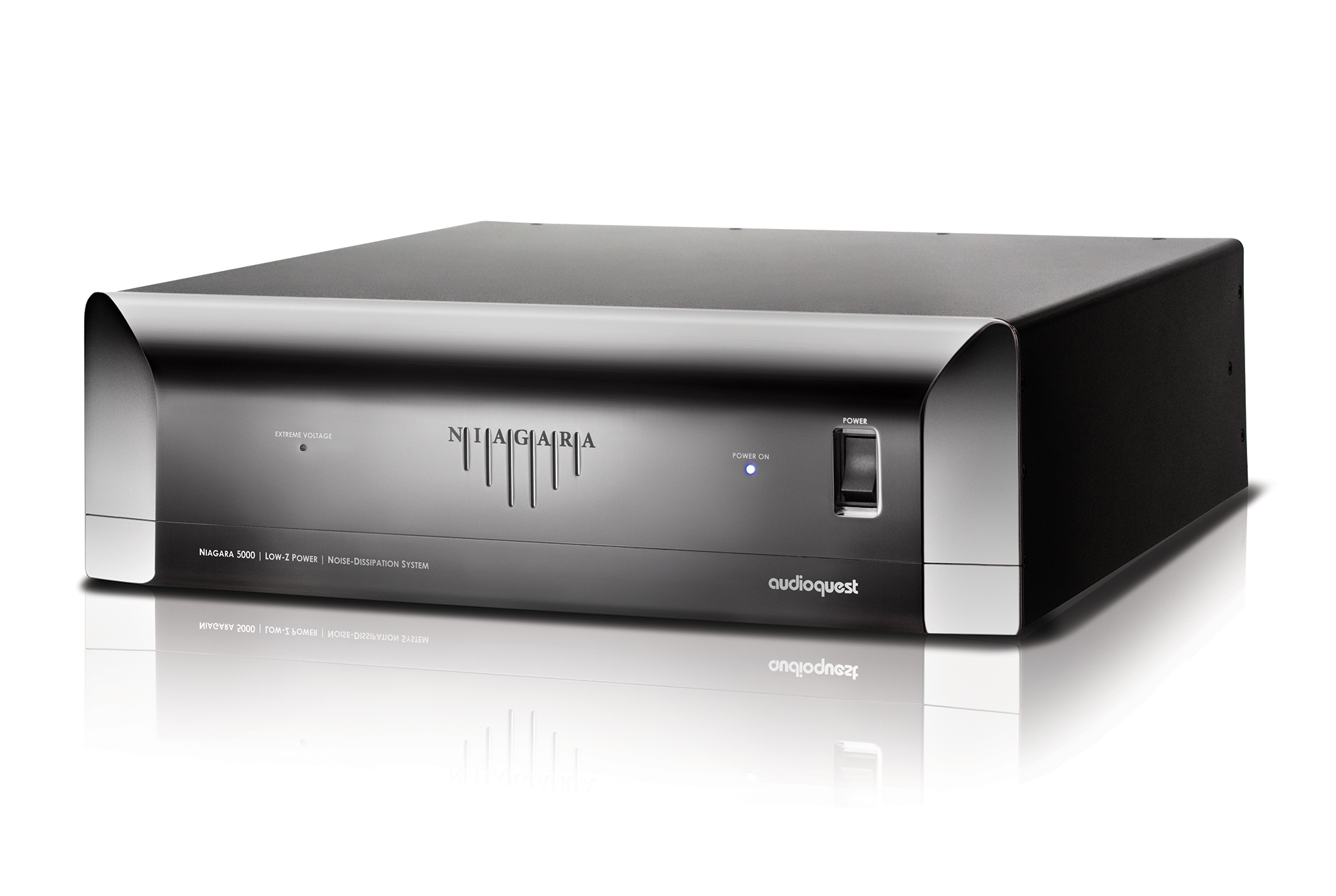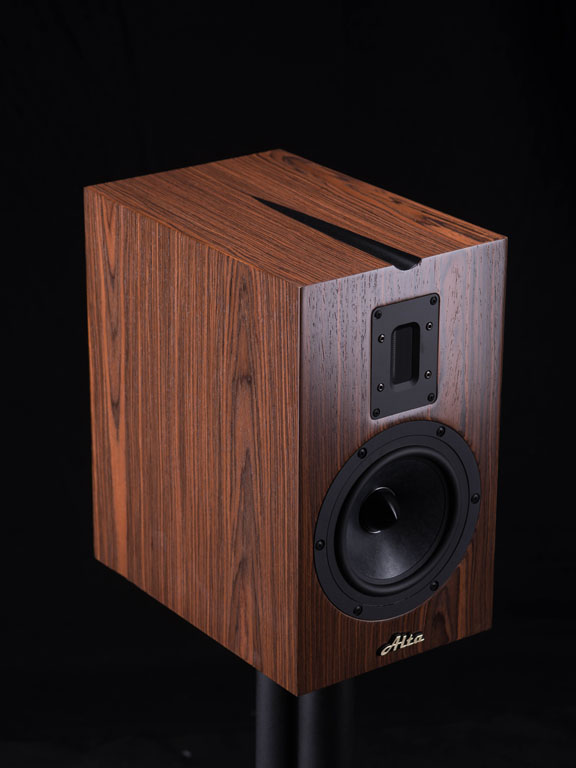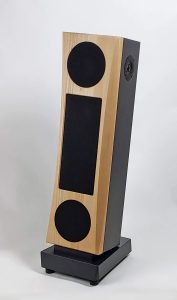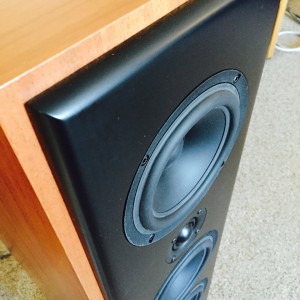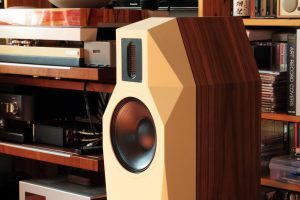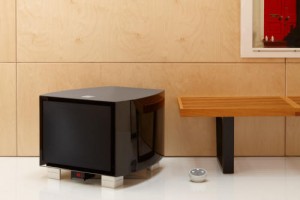I told a knowledgeable audio friend that I was writing about Q Acoustics speakers, and he didn't know the brand, so he looked it up. He saw online that the 3050 floorstanders I was to review cost $700. "This is bargain-basement stuff," he said. "Why is Positive Feedback getting you to review them?"
Why do we still do this to ourselves?
I did it too. When the PR person who was sending me the Naim Uniti Atom (review coming soon), suggested I also consider the Q Acoustics 3050, I was wary because I didn't know the brand sure, but mostly, I was wary because they cost "just" $700.
And then, oops, I did it again when I was delivered a single box, and assumed it contained the pair. I was surprised after hefting it indoors and opening it, that it contained only one speaker. (The other speaker took a different road to me—don't assume that just because they come in pairs they don't have their own lives.)
Handsome and well-built
The 3050 is a medium-sized two-way reflex floorstander with a handsome gray face plate and satin-finish black cabinet. It's a well-built, muted look that's rounded out, literally, by the curved top and bottom side edges, meant to reduce cabinet reflections. Even with the bolt-on stabilizer bar, those curves cause the speakers to, in the words of my wife, "Make you want to push them over," because they look as if they'll pop straight back up like those inflatable toy clowns with the weighted base and the squeaky nose.
The drivers are high up front with two 6.5" midrange / bass units and a 1" tweeter nestled between them, in a D'Appolito configuration. A ring around the tweeter unit is helpfully labeled "High Frequency De-Coupler" in a font that's identical to the "Q Acoustics" on the bottom half of the ring, as if to assure the showroom peerer there's isolation magic at work that's as important as the brand itself.
Round the back there's a port just below halfway down, and near the bottom are the four multi-connectors. I found out later that to "maintain cabinet integrity the terminal panel cabinet aperture is in two parts with internal bracing spar," which I thought was good attention to detail. The top connector pair points right, and the bottom pair points left, so I had to snip my speaker cable apart a little to have good single-wire cable hygiene, and have the positive go into the high-frequency red post, and the negative to the low-frequency black post. Apparently Q's connector design is to facilitate placement close to the rear wall, especially with bookshelf speakers on wall brackets. With bare wire, the cable lies nearly flush with the rear of the cabinet.
Annoyingly good
They tell you, again and again, don't judge a brand-new component. But what if you like it from out of the box? What if it has an engaging musicality and a slight forwardness that makes you prick your ears, and sit down for a while, even though the plan was to leave the room as they cooked?
The 3050 have a sound that reminds me of when I first connected a Rega RP1 turntable, retail around $450. I'd just helped set up a Brinkmann Bardo turntable, $9900, so though I knew intellectually it was utterly unfair, even irrational, to compare them, my muscle memory wasn't nearly as nuanced a thinker. The RP1 felt especially plastic-y and low-quality. I fully expected to hate it. I did not.
This is the annoying thing about many British brands. They play music in a way that makes me want to revisit and deeply query my inner price-performance ratio. Does the RP1 in any way "compete" with expensive turntables—of course not. But does it convey structure and meaning in a way I know I'd enjoy if that's all I had? I'm afraid so.
The 3050 is the same. It does that British Hi-Fi thing where you forget to think about the sound in a critical, detached way, and you start to bob or tap extremity of choice to the music. Many audiophiles understand that Hi-Fi characteristics are all very well, but if a system isn't being musical above all else, they'd rather have less micro-detail and air and scale and angel chorus, and live with the distillate that some call pace, rhythm, and timing. I have to agree with the reviews before me, that these speakers deliver enjoyment well above their $700 category.
With mention of PRaT, you might expect a pancake soundstage, but, no, these speakers image very, very well. Voices and instruments are stable and tactile in space, and things don't mush up when it gets complex. The speakers impressed me track after track, and while they do miss some weight and fine detail, you don't miss what they're missing because they provide a sense of the complete picture.
Safe quotes
I had emailed Alex Munro, brand director, Q Acoustics, a few chatty questions, and was mildly disappointed to get PR-friendly, brochure-copy answers back. I guess that's the arrogance of the audiophile in me that wants the brands I like to be driven by spiky geniuses with strong opinions who always say too much.
You can't blame me though. The text on the About Us page on the website did suggest I'd get some interesting quotes: "Q Acoustics was established in the UK 2006; not by a wealthy 'music lover' or retired 'rock musician.' No, Q Acoustics was founded by professional businessmen, experts in the audio industry; with the sole aim of developing a highly successful loudspeaker brand. It's that simple."
I'm still trying to figure out if there's a particular "wealthy music lover" or "retired rock musician" Q is taking a dig at. However, the thrust of my first question to Alex, though I worded them to sound less crass, was essentially, "How do they sound this good, this cheap?"
Alex listed a few characteristics of Q loudspeakers, including wide and even dispersion from the drivers; consistent, tight-tolerance production; cabinet bracing; and compliant driver mounting. Also note the sensitivity, a fairly high 92 dB, which may explain that ease you'd expect from a more expensive unit. Q Acoustics also uses a "bespoke" tweeter (I use scare quotes because I generally associate that word with clothing) that has been designed, wrote Alex, using finite element and boundary element methods to allow more air around the unit, but minimize unwanted airflow. The claimed result is that "the new tweeter delivers lower distortion and much better vertical and horizontal dispersion."
The bass / midrange units are made from a paper-aramid fiber mix, and the presence of Kevlar promises a rigid structure with low mass. You can hear this in the dynamics—not blinding, but definitely pleasing. The overall sense from the 3050 is that money has been spent, not on fancy wood finishes or voicing that meets some particular sound memory, but on good solid basics done well.
Many audiophiles direct their money to the main listening room and two-channel system, but the side effects of the obsession are too pronounced to allow any old shit into other rooms. Not for them the home-theatre-in-a-box from a brand that makes their kitchen appliances, or office-system speakers from a TV manufacturer. And because they're so often asked by friends to recommend good components that aren't too expensive, the search for good quality on a budget is as enduring as the hunt for the perfect high-end component for the main system.
This is why I'm excited to meet the 3050. Another advantage to them is that floorstanders at this price point can be problematic. I'm sure you can name at least a couple of brands that produce a great standmount at a competitive price, and then add an execrable floorstander in the desire to round out the range. If the Q Acoustics floorstander is this good, I'm excited to hear the 3020 and 3010 bookshelf speakers ($270 and $199). I've also added the Q Acoustics 3000 Series Home Theatre System to the list of speakers to consider for the little bedroom I want to turn into a non-intrusive, budget-friendly home cinema. And, to the non-audiophiles who ask for good sound and who don't think that $700 is "bargain basement" pricing, my most enthusiastic recommendation would be, that if my life took a turn (it doesn't have to be a very sharp turn at this point), and I had to drastically scale back my audio system, the 3050 has a sound I'd be happy to live with.
3050 Loudspeakers
Retail: $699.99 a pair
Q Acoustics




